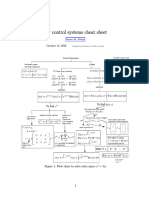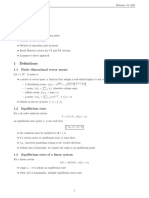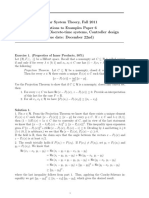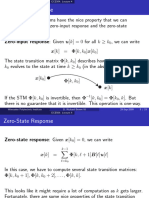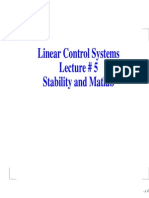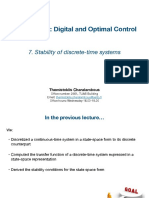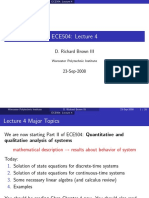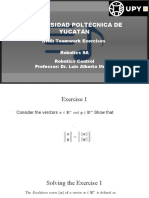0% found this document useful (0 votes)
143 views23 pagesLMI Methods in Optimal and Robust Control: Matthew M. Peet
This document summarizes a lecture on state-space theory and Lyapunov stability analysis. It introduces state-space representations of systems and defines the matrix exponential. It discusses properties of the matrix exponential and the Jordan decomposition. It defines stability for continuous and discrete time systems using Hurwitz and Schur matrices. It introduces Lyapunov functions and shows how they can be used to prove stability. It presents the Lyapunov inequality, which is the first LMI condition for stability. In summary, the document covers key concepts in state-space modeling and Lyapunov stability analysis using linear matrix inequalities.
Uploaded by
sema tekinCopyright
© © All Rights Reserved
We take content rights seriously. If you suspect this is your content, claim it here.
Available Formats
Download as PDF, TXT or read online on Scribd
0% found this document useful (0 votes)
143 views23 pagesLMI Methods in Optimal and Robust Control: Matthew M. Peet
This document summarizes a lecture on state-space theory and Lyapunov stability analysis. It introduces state-space representations of systems and defines the matrix exponential. It discusses properties of the matrix exponential and the Jordan decomposition. It defines stability for continuous and discrete time systems using Hurwitz and Schur matrices. It introduces Lyapunov functions and shows how they can be used to prove stability. It presents the Lyapunov inequality, which is the first LMI condition for stability. In summary, the document covers key concepts in state-space modeling and Lyapunov stability analysis using linear matrix inequalities.
Uploaded by
sema tekinCopyright
© © All Rights Reserved
We take content rights seriously. If you suspect this is your content, claim it here.
Available Formats
Download as PDF, TXT or read online on Scribd
/ 23



